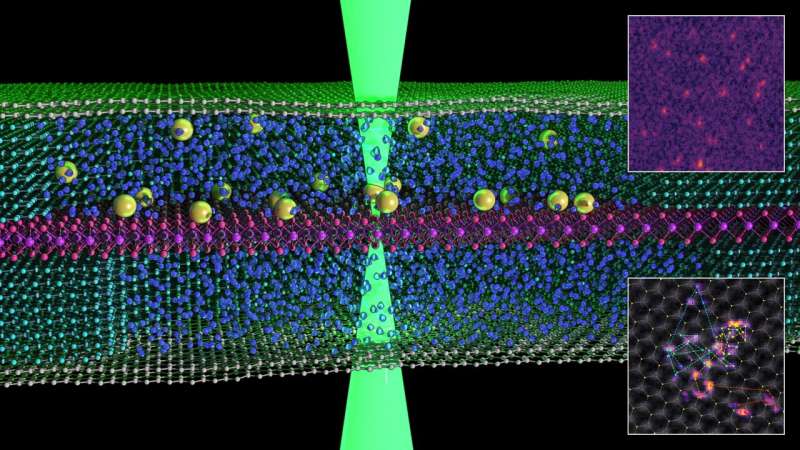
A new method of observing how atoms move in liquid has been created by Graphene Scientists from The University of Manchester.
The team led by researchers at the National Graphene Institute used stacks of 2D materials to trap liquid in order to understand how liquid changes the behavior of the solid.
For the first time, single atoms were captured in liquid. Future development of green technologies could be affected by the findings.
Both substances change their configuration when a solid surface is in contact with a liquid. The atomic scale interactions at solid-liquid interface govern the behavior of batteries and fuel cells for clean electricity generation, as well as determining the efficiency of clean water generation.
Professor Sarah Haigh commented that it is surprising how much we still have to learn about the basics of how atoms behave on surfaces in contact with liquids. There are no techniques that can give experimental data for solid-liquid interface.
One of the few techniques that allow individual atoms to be seen is transmission electron microscopy. The structure of materials can change in a high vacuum. If atomic behavior is studied in vacuum instead of in liquid cells, misleading information is provided.
Professor Roman Gorbachev has pioneered the stacking of 2D materials for electronics, but here his group have used those same techniques to develop a double graphene liquid cell. A 2D layer of Molybdenum disulfide was encapsulated by windows. The novel design allowed them to provide precisely controlled liquid layers, which allowed for unprecedented videos to be captured showing the single atoms "swimming" around, surrounded by liquid.
The researchers were able to understand the effects of liquid on atomic behavior by analyzing how the atoms moved in the videos. The liquid speeded up the motion of the atoms and changed their resting places with respect to the underlying solid.
The team studied a material that is promising for green hydrogen production but the experimental technology they have developed can be used for a lot of different things.
"This is a milestone achievement and it is only the beginning, we are already looking to use this technique to support development of materials for sustainable chemical processing, needed to achieve the world's net zero ambitions."
More information: Nick Clark et al, Tracking single adatoms in liquid in a Transmission Electron Microscope, Nature (2022). DOI: 10.1038/s41586-022-05130-0 Journal information: Nature